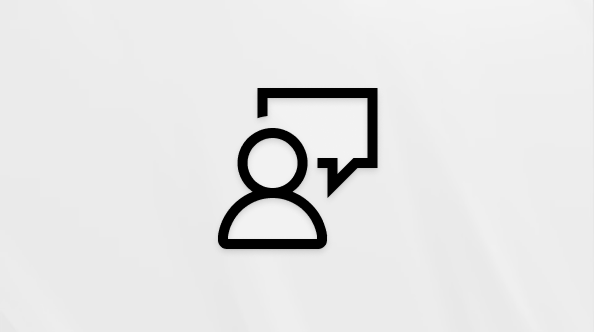This article is for people who want to control their PC and author text using their voice with Windows. This article is part of the Accessibility support for Windows content set where you can find more information on Windows accessibility features. For general help, visit Microsoft Support home.
This article answers some of the most commonly asked questions about the new voice access feature in Windows. For a list of voice access commands, go to Voice access command list.
Voice access is a feature in Windows 11 that enables everyone to control their PC and author text using only their voice and without an internet connection. For example, you can open and switch between apps, browse the web, and read and author email using your voice. For more information, go to Use voice access to control your PC & author text with your voice.
Voice access is available in Windows 11, version 22H2 and later. For more information on Windows 11 22H2 new features, and how to get the update, see What's new in recent Windows updates. Not sure which version of Windows you have? See: Find Windows version.
What are the differences between the new voice access and the classic Windows speech recognition (WSR)?
Voice access is the command feature that is currently available in English, German, Spanish, and French. WSR is the classic command feature that is available in multiple languages. To learn more about the differences, refer to the section Can I keep Dragon or Windows Speech Recognition running with voice access?
If you want to know more about WSR, refer to Use voice recognition in Windows.
Can I keep Dragon or Windows speech recognition running with voice access?
We understand that you might want to keep voice access along with another voice assistive technology open at the same time. To ensure you don’t accidentally wake up both apps or make both go to sleep, we have introduced unique wake words with voice access that do not affect Dragon or WSR. This way, you can easily switch between solutions without having both listening at the same time.
The different wake words are listed in the following table.
|
Voice access |
WSR |
Dragon |
|---|---|---|
|
Voice access wake up |
Wake up |
Wake up |
|
Voice access mute |
Go to sleep |
Go to sleep |
What is the difference between voice access and voice typing?
You might have been using voice typing and wonder how it is different from voice access. While voice access and voice typing have similarities, some differences will help you decide which experience to choose. Voice typing offers dictation that allows you to author text with voice. Voice access offers both commanding and dictation which means that you can perform not just text authoring but all tasks on your PC like working and interacting with different apps and editing text.
Some key differences between voice access and voice typing are listed in the following table:
|
Category |
Voice access |
Voice typing |
|---|---|---|
|
How to start the feature |
Voice access can be started from Settings>Accessibility>Speech. You can also search for it from the Start menu. |
Voice typing can be started by pressing the Windows logo key+H on a hardware keyboard. You can also press the Microphone key next to the Spacebar on a touch keyboard. |
|
Criteria for starting |
Voice access can be started at any time. |
Voice typing can only be started if the cursor is in a text box. |
|
Available in |
Windows 11 |
Windows 11, Windows 10 |
|
Languages supported |
Voice access is currently available in English, Spanish, French, and German. For more details, go to Set up voice access. |
Voice typing offers a number of languages. For more details, go to Use voice typing to talk instead of type on your PC. |
Note: If you are already running voice access and try to start voice typing (Windows logo key+H), you get the following message: "You can use voice access for typing too. Select a text box and start dictating."
For more details on voice typing, visit Use voice typing to talk instead of type on your PC.
Can I use voice access in a multi-display setup?
Yes, voice access can now be used in a multi-display setup. For more details, refer to Use voice access on a multi-display setup.
Can I drag my voice access UI?
You can’t move the voice access bar around on your screen. It is fixed at the top of your main screen, so it won’t hide anything else. The voice access UI allows you to switch the microphone on and off using voice access commands. It displays what you’re saying as you say it and shows you instructions to help you use voice access.
Can I use my screen reader with voice access?
Yes, you can use a screen reader to set up voice access. You can start voice access on your system, download the necessary speech model to enhance voice recognition capabilities, select the microphone to be used with voice access, navigate through the voice access user interface, and access the commands help page to read the supported commands.
Narrator, the built-in screen reader in Windows, now allows you to dictate and edit text in text boxes using voice access. You can hear back the dictated text for hands-free text authoring. In addition, you can also use voice access to give Narrator commands. For example, “Turn on Narrator,” “Speak faster,” “Read selection,” “Read next line,” etc.
To know the entire list of Narrator commands supported with voice access click the helpicon on the voice access bar, select “View all commands” and choose “Narrator commands.”
What will not work:
-
Using the voice access guide with a screen reader.
-
Core voice access features:
-
Using different voice access commands to get different tasks done.
-
Using “Click“ commands or number overlays to interact with specific items on the screen.
-
Using grid overlays to control the mouse pointer.
-
Notes:
-
You can press Alt+Tab to cycle through all open applications to move the focus to the voice access UI.
-
If you don't use headphones for listening to the screen reader, the audio output from the screen reader may get picked up by the voice access microphone, resulting in undesirable behavior.
I'm facing issues while downloading the language files when trying to set up voice access. What should I do?
If you face any problems with downloading the language files, refer to Troubleshooting live captions or voice access setup issues.
I am unable to use voice access to log in to my PC. What should I do?
Voice access is now available to log in to your PC starting with Windows 11, version 23H2. To enable this feature, you can turn on voice access from the accessibility flyout on the lock screen or set it to automatically start every time by selecting the option to Start voice access before signing in to your PC via Settings>Accessibility>Speech.
Can I use voice access while setting up my new Windows PC?
Voice access can be used to set up your new PC starting with Windows 11, version 23H2. You can turn on voice access from the Accessibility Flyout menu. You must be connected to the internet to download your preferred language for the first time and continue to set up your PC.
Can I use the "Click <name>" command on all UI items?
With the new updates made to voice access, you can also use the "Click <name>" command to interact with UI items with:
-
Special characters in their names, for example, Network & internet in the Settings app
-
Numbers in the name, for example, 7 in the Calculator app
-
File names, for example, "Presentation1."
With older voice access builds, if you still face an error, we recommend that you use a partial name for the item, for example, "Network" with your "Click” command to interact with it. You can also use overlays to interact with such controls.
For more information, go to Use voice to interact with items on the screen.
See also
Use voice to work with Windows and apps
Technical support for customers with disabilities
Microsoft wants to provide the best possible experience for all our customers. If you have a disability or questions related to accessibility, please contact the Microsoft Disability Answer Desk for technical assistance. The Disability Answer Desk support team is trained in using many popular assistive technologies and can offer assistance in English, Spanish, French, and American Sign Language. Please go to the Microsoft Disability Answer Desk site to find out the contact details for your region.
If you are a government, commercial, or enterprise user, please contact the enterprise Disability Answer Desk.











